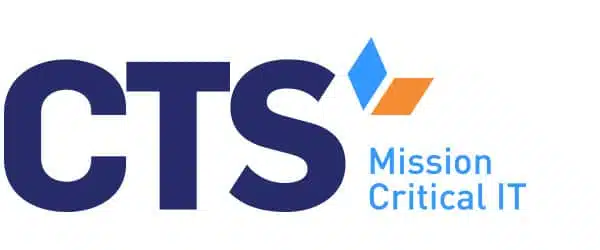Technology and security risks are evolving faster than ever, leaving businesses—especially small to medium-sized ones—struggling to keep up. While large enterprises can afford dedicated executives for IT strategy and cybersecurity, smaller organizations often need a more flexible solution. That’s where virtual executives can provide much-needed guidance.
A virtual CIO provides strategic IT leadership, aligning technology with business objectives. A virtual CISO, on the other hand, focuses on cyber risk management, security measures, and regulatory compliance. Both roles are essential, but they serve different key functions.
So, which one does your business need? Let’s delve into the specifications of these two services, and break down your business requirements to decide which is right to future-proof your company.
What is a vCIO?
A Virtual Chief Information Officer (vCIO) provides executive-level IT strategy without the cost of hiring a full-time employee. This role ensures that a company’s technology investments align with its long-term business goals, optimizing IT operations while controlling costs.
Key Responsibilities of a vCIO
A vCIO works closely with leadership teams to develop and implement technology strategies that drive efficiency and innovation. Core responsibilities include:
- Technology Roadmap & IT Strategy: Aligning IT infrastructure with business objectives to support growth.
- Budget Planning & Cost Optimization: Maximizing IT investments while reducing unnecessary expenses.
- Vendor Management: Evaluating and negotiating with technology providers to ensure businesses get the best value.
- Digital Transformation Initiatives: Modernizing legacy systems and integrating cloud solutions to enhance productivity.
- Security Measures & Risk Assessment: Collaborating with security experts to identify vulnerabilities and strengthen cybersecurity efforts.
When Do You Need a vCIO?
A vCIO is ideal for businesses that:
- Need a strategic approach to IT but can’t justify hiring a full-time CIO.
- Struggle with outdated technology and inefficient IT systems.
- Want to ensure compliance with industry standards while optimizing IT investments.
- Require guidance in selecting and managing IT vendors.
- Are planning a major technology shift, such as cloud migration or digital transformation.
Learn more: Why Aligning Business and IT Strategies is So Important
What is a vCISO?
A Virtual Chief Information Security Officer (vCISO) is a cybersecurity expert who provides strategic security leadership without the expense of hiring a full-time executive. Businesses use vCISO services to strengthen their security posture, protect sensitive data, and maintain compliance with industry standards.
Unlike an in-house security team, a vCISO works on demand, offering high-level guidance tailored to an organization’s needs.
Key Responsibilities of a vCISO
A vCISO helps businesses develop and implement comprehensive security strategies that protect against security incidents and cyber risks. Key responsibilities include:
- Risk Assessment & Cyber Threat Management: Identifying vulnerabilities and ensuring proactive defenses against potential attacks.
- Security Policy Development: Establishing company-wide security measures that align with industry standards.
- Regulatory Compliance: Ensuring compliance with frameworks like HIPAA, GDPR, and NIST to avoid legal and financial penalties.
- Incident Response & Recovery: Preparing businesses to handle security incidents quickly and effectively to minimize damage.
- Employee Training & Awareness: Educating teams on cybersecurity programs and best practices to reduce human error and insider threats.
When Do You Need a vCISO?
A vCISO service is essential for organizations that:
- Need cybersecurity expertise but lack the budget for a full-time CISO.
- Must comply with strict industry regulations and security requirements.
- Have experienced or are concerned about data breaches and cyber threats.
- Want to strengthen security but don’t have an in-house security team.
- Are scaling rapidly and need structured cybersecurity efforts to protect sensitive data.
Learn more: A Complete Guide to Cybersecurity
vCISO vs. vCIO: Key Differences
Feature | vCIO | vCISO |
| Best for | Businesses needing IT leadership | Businesses needing cybersecurity expertise |
| Main goal | Align IT with business objectives | Protect data & prevent security incidents |
Who they work with | Business leadership, IT teams | Security teams, compliance officers |
| Primary focus | IT strategy & business growth | Cybersecurity & risk management |
| Responsibilities | IT planning, budgeting, vendor management | Compliance, risk assessment, security governance |
How to Decide Which Service is Right for Your Business
To determine whether you need a vCIO service, a vCISO service, or both, ask these key questions:
- Is your IT strategy aligned with your business goals? If you don’t have a clear technology roadmap, a virtual CIO can help you develop and implement an IT plan that supports growth.
- Are you struggling with IT budgeting and vendor management? A vCIO ensures that IT investments deliver value, preventing overspending on unnecessary tools or inefficient solutions.
- Do you need help with digital transformation? If your business is transitioning to cloud computing, automation, or other modern technologies, a vCIO service can guide you.
- Are you confident in your security posture? If your company has not conducted a recent risk assessment, you may have hidden vulnerabilities that a vCISO can identify and fix.
- Do you handle sensitive customer or financial data? Businesses in industries such as healthcare, finance, and education must comply with strict industry standards. A vCISO ensures compliance with regulations like HIPAA, GDPR, and NIST.
- Have you experienced security incidents, such as phishing attacks or data breaches? If so, your cybersecurity strategy likely needs improvement. A vCISO service can develop and implement stronger defenses.
- Does your business lack a dedicated security team? Many SMBs cannot afford a full-time employee for security leadership. A vCISO can provide cybersecurity expertise on a flexible basis.
When You Need Both Services
For many organizations, strategic planning and cybersecurity go hand in hand. You may need both a vCIO and vCISO if:
- Your IT strategy must account for cybersecurity efforts to prevent disruptions.
- Your company is growing and requires both innovation and security.
- You operate in a regulated industry that requires IT efficiency and strict compliance.
By assessing your current IT and security challenges, you can make an informed decision about which service best fits your needs.
Learn more: Fully Managed VS Co-Managed IT: Which Should You Choose?
Discover the Strategic Guidance Your Business Needs
Businesses today must balance technology-driven growth with cyber risk management. While a vCIO ensures IT efficiency and strategic planning, a vCISO strengthens security measures and compliance. Choosing the right leadership depends solely on your company’s needs.
At CTS, we understand that businesses need more than just IT support—they need strategic leadership that aligns technology with growth and security. Reach out to our team of experts for a consultation to determine your business needs, and let’s work towards finding the right solutions to keep your business secure and competitive.




